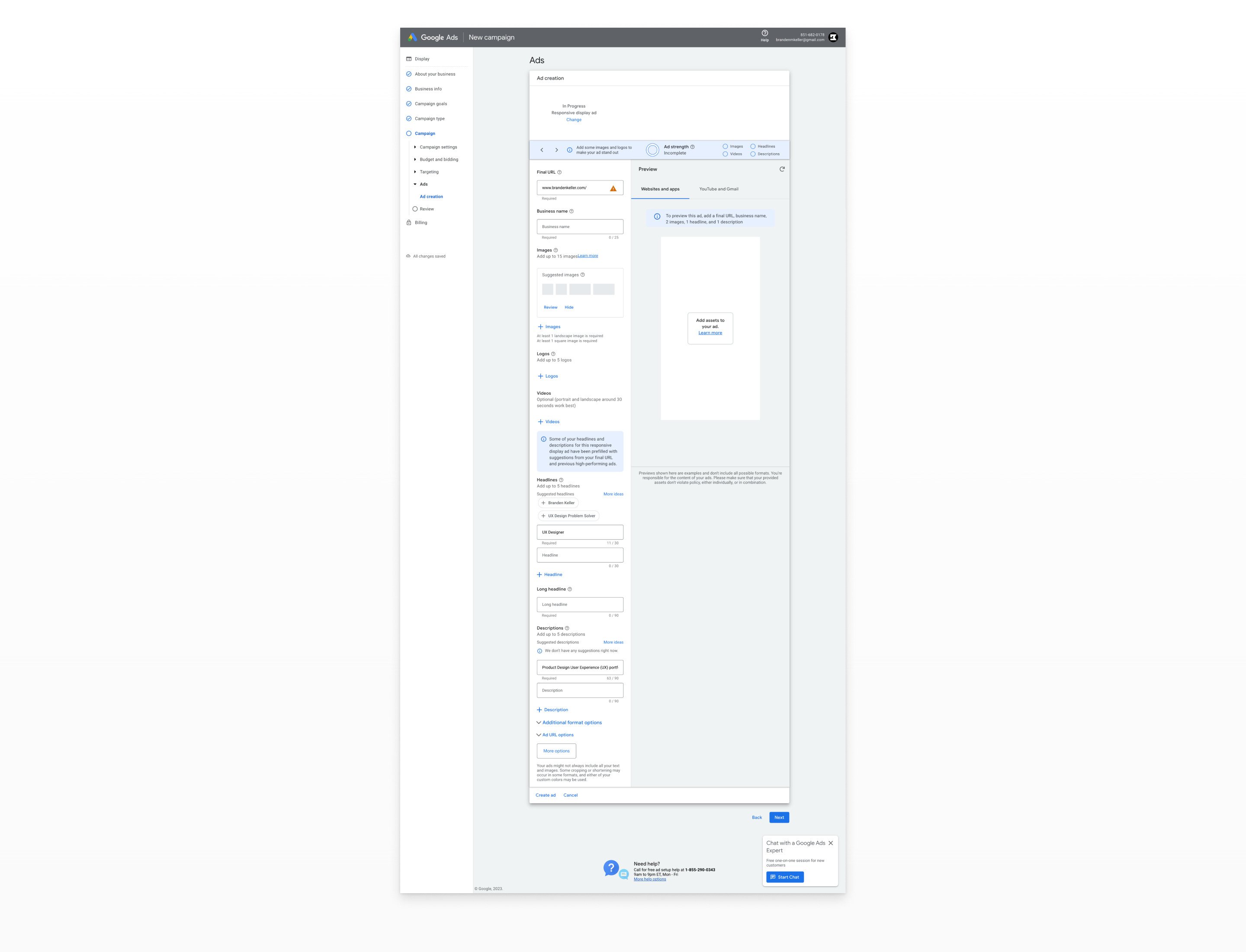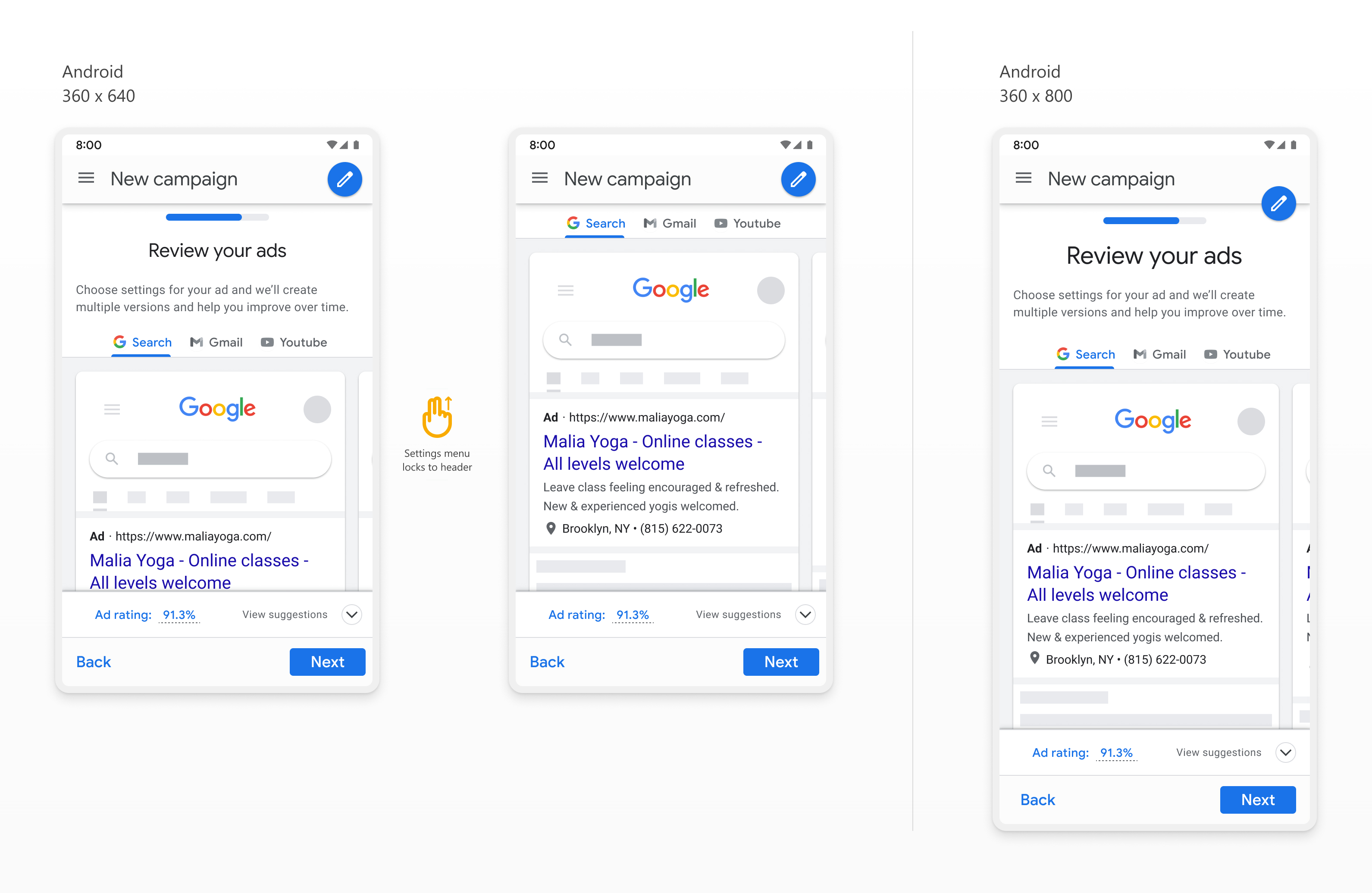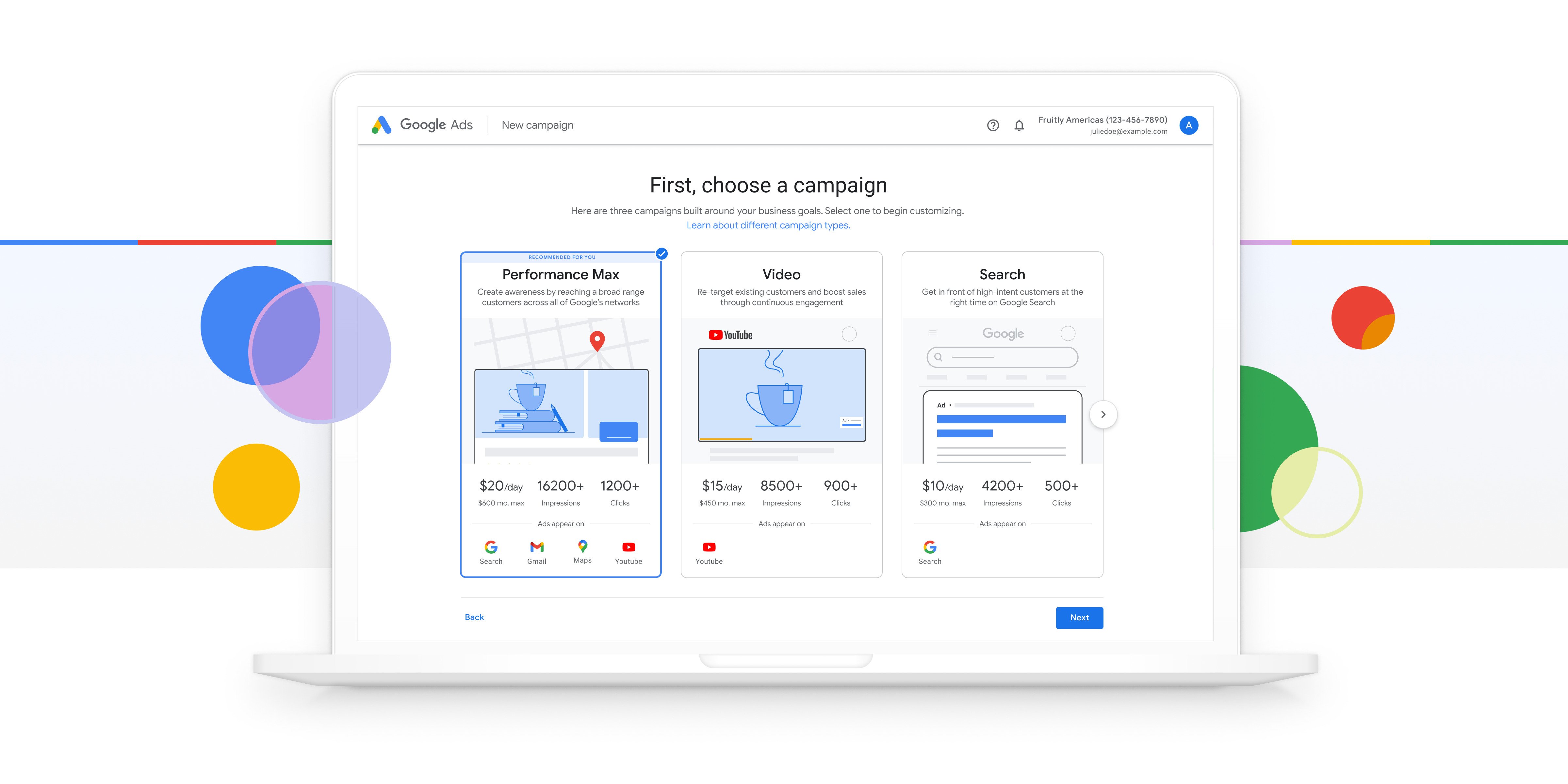Google Ads for SMBs
In the Fall of 2022, I began working with Google on a project to streamline Google Ads for small to medium business customers (SMBs). My role centered on simplifying ad creation, but also included creating concepts for campaign selection, audience targeting, keywords, budgeting, and billing.
A quick overview of the features I worked on. There's more detailed prototypes below.
Problem
Google research showed us that SMB customers were struggling to find advertising solutions that fit their needs and budget.
Advertising is a particular challenge for small-to-medium business (SMB) customers; they often wear multiple hats in their business so they don’t have time to spend learning complex software and advertising terminology when they’re already stretched thin managing supply chains, accounting, and customer service.
SMBs knew that Google Ads could generate value for them, but since it was targeted towards professional marketers it was too time-consuming and complicated for their level of expertise. Google Ads includes a lot of complex settings which are then further complicated by industry jargon and advertising terminology. We needed to simplify it.
Goal
SMBs needed a flexible, low-cost solution that would be as simple and intuitive as possible. As a UX designer on the project, we needed to conceive of a version of the platform that would be tailored to their needs.
My role
I drove the design of several features through a 3-phase sprint process:
- My primary focus was designing and prototyping approaches to simplify and personalize the ad creation workflow.
- I conceived a new approach to audience targeting and keyword generation through the use of audience profiles.
- I created iterations for an A/B experiment to test elements of page layout, interaction paradigm, and visual fidelity for campaign selection.
- I streamlined IA and interaction for budget and billing workflows.
Design Process
As a general approach, we wanted to utilize the information provided in their Google My Business profile along with a few focusing questions to automate much of the ad campaign process.
This would allow us to keep the user in control while providing them with pre-filled forms and personalized recommendations. However, we were not yet clear on how to design or write content tailored for this type of customer so we refined our knowledge through a multi-phase sprint process with each being followed by validation testing with users.
- Round 1 - clarify the correct interaction paradigm for this type of customer and gain initial feedback on the overall app flow.
- Round 2 - settle on the overall app flow and begin working out feature level design patterns.
- Round 3 - was to create an MVP design prototype of the product for testing.
I began by generating concept prototypes in collaboration with my team to identify an interaction model to be used as a core paradigm for the platform. We then worked with a great team of researchers to test our interaction patterns and found that user feedback was overwhelmingly positive on a progressive disclosure model. This worked well for simplifying the platform because we could then focus the experience on primary functionality and provide advanced controls as an option for the user rather than an obligation.
I then started exploring patterns for progressive disclosure within the workflows for the core features I was responsible for. My work centered on simplifying ad creation, but also included audience targeting, keywords, budgeting, and billing.
Ad Creation
Ads are system generated combinations of content. Not single instances. I needed to achieve simplicity. I iteratively prototyped many possibilities for this type of interaction paradigm exploring it within the logic of the overall workflow and design system to maintian stylistic integrity of the platform we were designing.
After I created intial concepts we refined the goal and I was tasked with creating an edit-in-place solution for editing ad content. This way SMBs could simply review the information provided and invest time customizing only when they deemed it necessary.
Through research and iteration I came to understand that edit-in-place interactions only tend to work well for very simple field editing. Therefore the inputs needed to be simplified to make this paradigm work. Section-level editing needed to become field-level editing. Complex controls needed to be broken down into a series of simpler inputs. Yet, settings needed to maintain the context afforded by the surrounding settings.
Desktop

The UI is unrefined and there's a overwhelming amount of detailed settings that flow down the page. The user could easily get lost or confused in the workflow.
Desktop concepts - These explorations led me to the insight that they all require an action to induce a content or component change before editing. I wanted a simpler interaction.
The final version of Ad Creation I designed. For the interaction, I evolved towards an approach of changing modes on the actual input. This way all interactions are consistent, simple, and located relative to the content to be edited. It reduces friction and time to action for the user in the workflow by reducing movement of the content and components on the screen.
Mobile

Mobile concept - An early design of the mobile experience.
The hover interaction used on desktop doesn't work on a mobile device so I updated all interaction to fit more naturally with the format. All functionality is preserved.
Result
Our explorations were successful in leading the team to better understand how to design interaction for SMBs. After multiple rounds of iteration requiring over 90% CSAT in each round, and finalized an approach with ~96% CSAT to validate the viability of our approach. In the end, we were able to come up with a minimal interaction approach that didn’t require the user to do any setup aside from reviewing and confirming the AI-generated content.
This made it easy for users at all knowledge levels to get their ad campaign up and running in just a few minutes. Further research validated this approach and the project now serves as a foundation for a larger revision of Google Ads.
